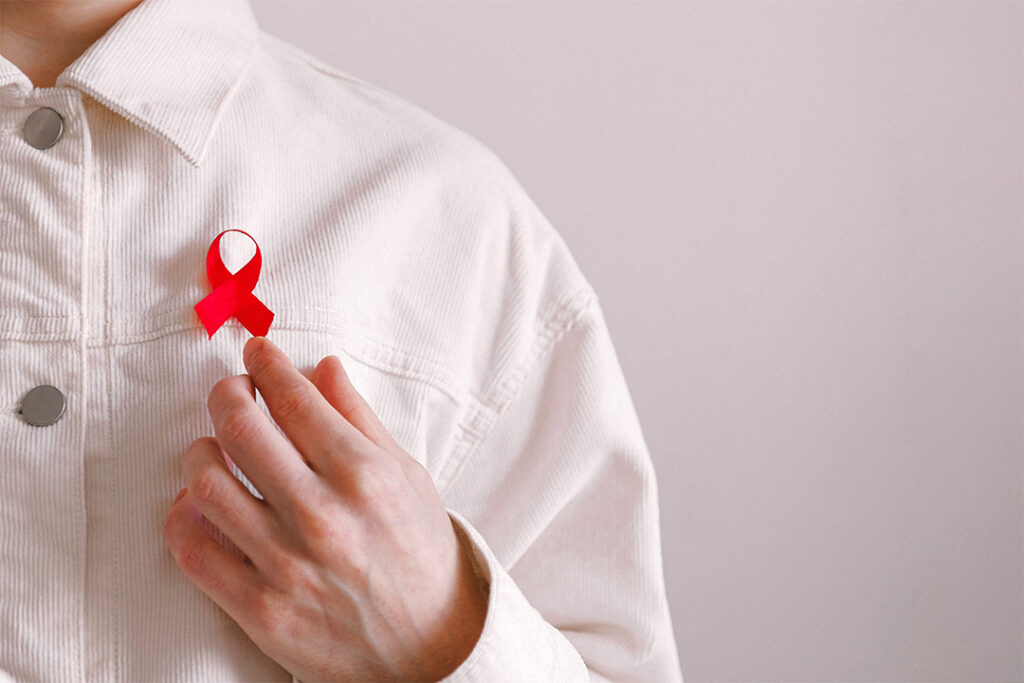*They will aim to reduce the number of HIV infections by 90% by 2030.

By Pamela Cruz. Peninsula 360 Press [P360P].
As of 2018, there were 1,39,680 people living with HIV in the U.S. as of 2018, that same year 37,864 people were diagnosed with the same disease, 76.4 percent of those residents were men, 23.6 percent women, however, the most affected were communities of color, which accounts for the continued inequities regarding the virus.
Thus, the percentage of people living with HIV, by race and/or ethnicity in 2018 was 40.6 percent among African Americans, 23.7 percent among Hispanic or Latinos, and 29.2 percent among Caucasians.
According to the Centers for Disease Control and Prevention (CDC), despite overall progress in reducing new infections among gay and bisexual men, the HIV epidemic continued and was most severe among these groups in the African American and Latino communities.
However, he said, "with effective prevention and treatment tools at our disposal, the nation has an opportunity that has been decades in the making to end the national HIV epidemic and erase the disparities that stand out in HIV prevention and care."
In a statement, CDC noted that it is working with partners through the federal Ending the HIV Epidemic in the U.S. initiative to scale up key science-based HIV treatment and prevention strategies in innovative ways that reach populations equitably, where the goal is to reduce the number of HIV infections by 90 percent by 2030.
He noted that from 2010 through 2019, the number of new HIV infections remained relatively stable among African-American gay and bisexual men - between 8,900 and 9,000 - and Hispanic or Latino men - between 6,800 and 7,900 - and declined among white men from 7,500 to 5,100.
"Unequal procurement of HIV prevention and treatment, higher levels of HIV in some communities, and systemic inequities promote these worrisome trends." stressed the agency.
The new Vital Signs report, which commemorates World AIDS Day on December 1, shows that gay and bisexual men who are African American and Hispanic or Latino were less likely to be diagnosed with HIV infection, achieve viral suppression, or use pre-exposure prophylaxis (PrEP) to prevent HIV infection, compared to those in the same group, but who are white.
In 2019, an estimated 83 percent of African-American gay and bisexual men and 80 percent of the same group, but Latino, with HIV had been diagnosed, compared with 90 percent of Caucasians.
Meanwhile, an estimated 62 percent of blacks and 67 percent of Hispanics or Latinos diagnosed with HIV infection had achieved viral suppression, compared to 74 percent of whites.
The report also includes the most recent data, from 2017, on PrEP use among gay and bisexual men, shows that only 27 percent of blacks and 31 percent of Hispanics or Latinos were using PrEP, compared with 42 percent of whites.
Although not nationally representative, PrEP use data were collected from gay and bisexual men in 23 cities, where more than half of all people living with HIV in large urban areas reside.
HIV-related stigma -- negative attitudes and beliefs about people with the disease -- may also contribute to these disparities, the CDC said.
An analysis of data from the Medical Monitoring Project - a nationally representative survey of people with HIV diagnoses - found that black and Hispanic or Latino gay and bisexual men were more likely to report feeling HIV-related stigma than the same group, but white.
President Joseph Biden said that while remarkable progress has been made in the 40 years since the first known case of AIDS, "this disease remains a serious public health challenge, and we join the international community in honoring and remembering the more than 36 million people, including 700,000 Americans, who have tragically died from AIDS-related illnesses since the beginning of the epidemic.
In a statement issued by The White House, he detailed that the pandemic also disrupted HIV research, and reminded that progress remains to be made to achieve equitable access to HIV prevention, care and treatment in all communities, particularly for communities of color, adolescent girls and young women, and the LGBTQI+ community.
In response, he said, his Administration is launching an updated National HIV/AIDS Strategy to reduce health inequities in new diagnoses and improve access to comprehensive, evidence-based HIV prevention tools.
"This updated strategy will make equity a cornerstone of our response and bring a whole-of-government approach to the fight against HIV," he stressed.
He explained that his budget request includes $670 million to support the Department of Health and Human Services' Ending the HIV Epidemic in the U.S. initiative to reduce HIV diagnoses and AIDS-related deaths.
"My Administration is committed to helping the world end the AIDS epidemic as a public health threat by 2030," he stressed.
"Ending the HIV epidemic is within our reach and we are committed to finishing this work. On World AIDS Day, we rededicate ourselves to continue to build on the progress of the past 4 decades; defend and promote human rights; support research, science and data-driven solutions; expand access to housing, education and economic empowerment; and fight stigma and discrimination."
"No one living with HIV should suffer the undeserved guilt and prejudice that many continue to experience. We must innovate and explore new ways to help address HIV/AIDS in communities here at home and around the world."
You may be interested in: HIV and SARS-CoV-2: challenges to be overcome for migrants and Latinos


